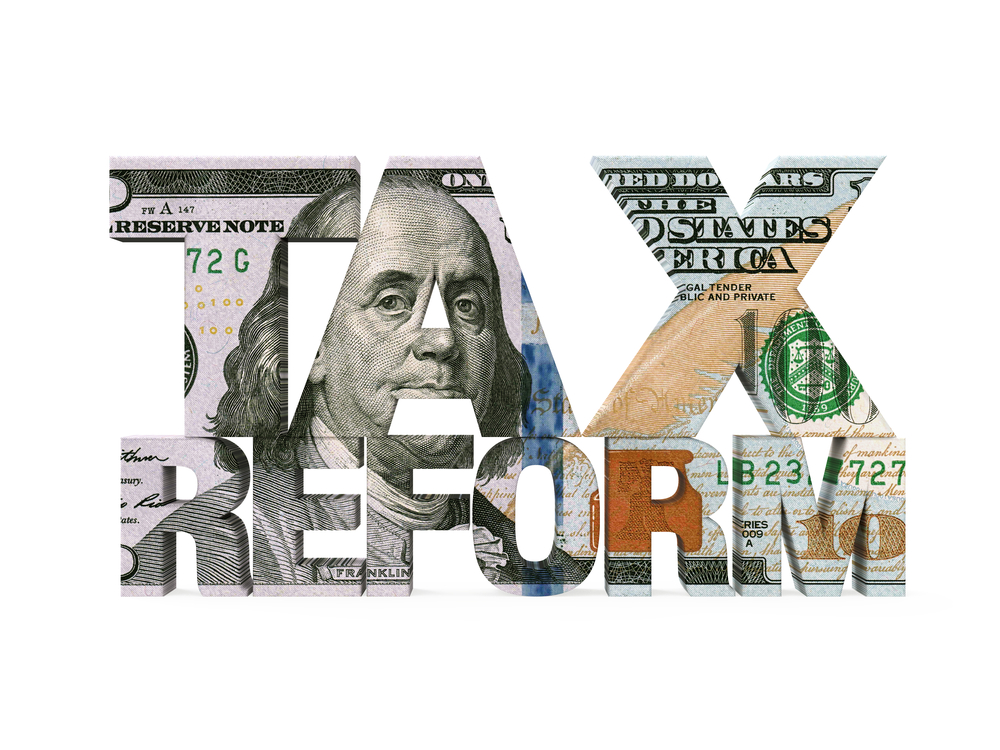
Property Tax Reforms: What Homeowners Can Expect
For many homeowners, property taxes are one of the most significant ongoing expenses, often feeling like a mysterious, ever-increasing burden. They fund everything from local schools and libraries to police and fire departments, making them essential for community services. However, as property values fluctuate and economic pressures shift, the fairness and affordability of these taxes frequently come under scrutiny.
This is where property tax reforms come into play. These are deliberate changes made by local and state governments to the way property taxes are assessed, calculated, and collected. They can range from minor tweaks to sweeping overhauls, and understanding them is crucial for every homeowner.
So, what exactly can you expect when property tax reforms are on the horizon? Let’s break it down in plain language.
What Exactly Are Property Taxes, Anyway? (A Quick Refresher)
Before diving into reforms, let’s quickly define property taxes. Simply put, they are taxes assessed on real estate – land and any permanent structures on it (like your home).
- Local Funding: They are primarily collected by local governments (counties, cities, towns) to pay for local services. Think of it as your contribution to the local piggy bank that funds the services you use every day.
- Based on Value: Your property tax bill is typically calculated based on your home’s assessed value (how much the local government thinks your property is worth for tax purposes) and the tax rate (a percentage or millage rate set by the local government).
So, if your home is assessed at $300,000 and the tax rate is 1%, your annual property tax would be $3,000. Simple, right? Well, the "assessed value" and "tax rate" parts are where things can get complicated, and where reforms often focus.
Why Do Property Tax Reforms Happen? The Driving Forces Behind Change
Governments don’t just wake up one day and decide to change tax laws for fun. There are usually compelling reasons behind property tax reform efforts. Understanding these motivations can help you anticipate the type of reforms that might be proposed.
-
1. Fairness and Equity:
- Problem: Assessments can become outdated, leading to some homeowners paying disproportionately more than others for similar properties. Rapid appreciation in one area might not be reflected in another.
- Goal of Reform: To ensure that the tax burden is distributed more fairly among all property owners, based on current market values and consistent assessment practices.
-
2. Affordability and Homeowner Burden:
- Problem: Skyrocketing property values can lead to huge increases in tax bills, making it difficult for long-time residents, seniors, or those on fixed incomes to afford their homes, even if their income hasn’t increased.
- Goal of Reform: To provide relief to homeowners, especially vulnerable populations, and prevent people from being "taxed out" of their homes.
-
3. Revenue Needs:
- Problem: Local governments might face budget shortfalls due to declining tax bases, increased demand for services, or state funding cuts.
- Goal of Reform: To ensure a stable and adequate revenue stream for essential public services, sometimes by adjusting rates or expanding the tax base.
-
4. Economic Development:
- Problem: High property taxes can deter new businesses or residents from moving into an area, hindering economic growth.
- Goal of Reform: To create a more competitive tax environment that attracts investment, creates jobs, and boosts the local economy.
-
5. Transparency and Simplicity:
- Problem: The property tax system can be confusing, making it hard for homeowners to understand how their bill is calculated or how to appeal an assessment.
- Goal of Reform: To make the system easier to understand, more transparent, and more accessible for homeowners.
Common Types of Property Tax Reforms and Their Potential Impact
Property tax reforms come in many shapes and sizes. Here are some of the most common types you might encounter, along with what they could mean for your wallet:
1. Assessment Reforms
This type of reform focuses on how your property’s value is determined for tax purposes.
- What it is:
- Revaluation/Reassessment Cycles: Governments might update how often properties are reappraised (e.g., from every 10 years to every 3-5 years) to ensure assessed values are closer to current market values.
- Changes in Assessment Ratios: Some states apply a percentage to the market value to arrive at the assessed value (e.g., assessed value is 70% of market value). Reforms might change this ratio.
- New Valuation Methods: Implementing more sophisticated data analysis or appraisal techniques.
- What Homeowners Can Expect:
- More Accurate Bills (Eventually): If your property was under-assessed, your taxes might go up. If over-assessed, they might go down.
- More Frequent Changes: If reassessment cycles shorten, your tax bill could fluctuate more often based on market trends.
- Potential for Sticker Shock: A sudden, large jump in assessed value after a long period without reassessment can lead to a significant tax increase, even if the tax rate remains the same.
2. Rate Reforms
This involves changing the percentage or millage rate that is applied to your assessed value.
- What it is:
- Rate Reductions: Lowering the tax rate, often to offset rising property values and prevent large tax increases.
- Rate Increases: Raising the tax rate to generate more revenue for local services, especially if property values have stagnated.
- Differential Rates: Applying different tax rates to different types of properties (e.g., commercial vs. residential) or to different parts of a city.
- What Homeowners Can Expect:
- Direct Impact on Your Bill: A lower rate directly reduces your tax bill, while a higher rate increases it.
- Can Be Misleading: A lower rate might still result in a higher bill if your assessed value has jumped significantly. Always look at both factors.
3. Exemption and Abatement Reforms
These reforms focus on who qualifies for tax breaks and how much they save.
- What it is:
- New Exemptions: Introducing new tax breaks for specific groups (e.g., seniors, veterans, disabled homeowners, first responders).
- Expanding Existing Exemptions: Increasing the amount of a homestead exemption (which reduces the taxable portion of your home’s value) or making more people eligible.
- Targeted Abatements: Offering temporary tax breaks for specific improvements (e.g., energy efficiency upgrades) or for properties in designated revitalization zones.
- What Homeowners Can Expect:
- Potential for Lower Bills: If you qualify for a new or expanded exemption, your taxable value will decrease, leading to a lower bill.
- Requires Action: You often need to apply for exemptions; they are not automatically granted. Stay informed about new opportunities.
4. Tax Cap and Circuit Breaker Reforms
These are designed to limit how much your tax bill can increase year over year.
- What it is:
- Tax Caps: Limiting the percentage by which your property tax bill can increase annually (e.g., no more than 2-3% increase per year, regardless of assessment changes). This is common in states like California (Prop 13) and Massachusetts (Prop 2 1/2).
- Circuit Breakers: Providing tax relief when property taxes exceed a certain percentage of a homeowner’s income. It acts like an electrical circuit breaker, kicking in when the tax burden becomes too high.
- What Homeowners Can Expect:
- Protection from Spike: These reforms offer a crucial safety net, preventing sudden, massive increases in your tax bill, even if property values soar.
- Potential for Delayed Impact: While caps protect you in the short term, they can lead to your assessed value falling significantly behind market value over time. When the property is sold, the new owner often faces a much higher tax bill.
- Income-Dependent Relief: Circuit breakers are particularly beneficial for low- and moderate-income homeowners.
5. Transparency and Appeal Process Reforms
These reforms aim to make the property tax system easier to understand and navigate.
- What it is:
- Improved Notifications: Clearer, more detailed assessment notices explaining how your value was determined and how to appeal.
- Online Tools: Providing online access to property data, assessment records, and appeal forms.
- Streamlined Appeals: Simplifying the process for homeowners to challenge their assessment, including clearer deadlines and easier access to information.
- Public Education: Government campaigns to educate homeowners about their rights and responsibilities regarding property taxes.
- What Homeowners Can Expect:
- Empowerment: You’ll have better access to information and a clearer path to challenge your assessment if you believe it’s incorrect.
- Reduced Frustration: A less confusing process means less stress for homeowners.
The Potential Impact on Homeowners: Good News & Challenges
Property tax reforms are rarely a win-win for everyone. They typically involve trade-offs.
Potential Positive Impacts:
- Increased Affordability: For many, reforms aim to make property taxes more manageable, especially for those on fixed incomes or in areas with rapidly rising home values.
- Fairer Distribution: If reforms correct outdated assessments, the tax burden could be more equitably shared.
- Improved Stability: Tax caps and circuit breakers can provide predictability and prevent sudden, unaffordable jumps in your tax bill.
- Greater Transparency: Easier access to information and a clearer appeal process can help homeowners feel more in control.
- Economic Benefits: Well-designed reforms can stimulate local economies by making areas more attractive to residents and businesses.
Potential Challenges and Considerations:
- Winners and Losers: While some homeowners benefit, others might see their taxes increase, especially if their property was previously under-assessed.
- Shifted Burden: If residential taxes are reduced, the burden might shift to commercial properties, or local governments might need to find revenue elsewhere (e.g., sales taxes).
- Impact on Services: If reforms significantly cut property tax revenue without alternative funding, local services (schools, police, infrastructure) could face cuts.
- Complexity: Even "simpler" reforms can introduce new rules and calculations that homeowners need to understand.
- Delayed Effects: Some reforms, like assessment caps, can lead to a significant gap between your assessed value and your true market value, which can create issues down the line (e.g., for new buyers).
How Homeowners Can Prepare and Stay Informed
Navigating property tax reforms can feel overwhelming, but being proactive can make a big difference.
-
Monitor Local News and Government Announcements:
- Be Alert: Keep an eye on local news, city council meetings, and county government websites. Property tax reforms are usually big news and widely discussed.
- Sign Up for Alerts: Many local governments offer email newsletters or alert systems for important updates.
-
Understand Your Current Assessment:
- Review Your Notice: When you receive your annual assessment notice, don’t just glance at the total. Understand your property’s assessed value, the tax rate applied, and any exemptions you currently receive.
- Check Comparable Sales: Look at recent sales of similar homes in your neighborhood. Does your assessment align with those values?
-
Know Your Rights to Appeal:
- Understand the Process: If you believe your assessment is incorrect, you usually have a limited window to appeal. Learn the deadlines and the steps involved in your locality.
- Gather Evidence: If you appeal, be prepared to present evidence, such as recent appraisals, photos of property issues, or comparable sales data.
-
Budget Wisely:
- Anticipate Changes: If reforms are being discussed, try to anticipate how they might affect your bill and adjust your budget accordingly.
- Build an Emergency Fund: A small buffer can help absorb unexpected increases.
-
Engage with Local Government:
- Attend Meetings: Go to public forums or town halls where property tax reforms are being discussed. This is your chance to ask questions and voice your concerns.
- Contact Officials: Write or call your local representatives (city council members, county commissioners) to share your perspective.
- Join Homeowner Associations: These groups often monitor and advocate on behalf of homeowners regarding property tax issues.
The Bottom Line: Be Informed, Be Prepared
Property tax reforms are a constant in the world of local governance, driven by a desire for fairness, affordability, and adequate funding for public services. While they can seem complex, understanding the basics of why they happen and how they might affect your specific situation is the first step toward managing your property tax burden.
By staying informed, understanding your assessment, and knowing your rights, you can navigate these changes with confidence and ensure your voice is heard in the ongoing conversation about how we fund our communities. Your home is likely your biggest asset, and understanding its tax implications is a crucial part of responsible homeownership.



Post Comment